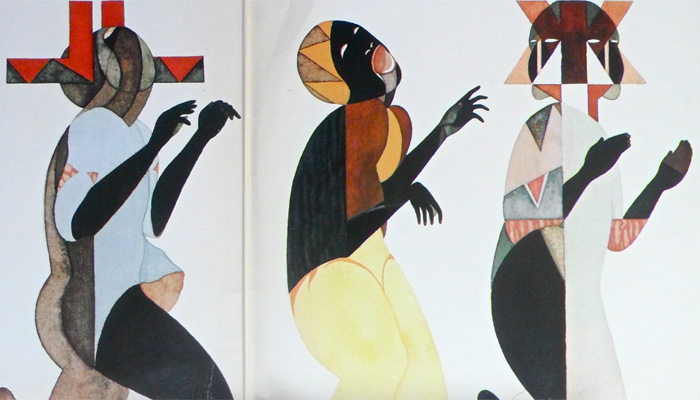
She was the only black woman at our college party. Tall, muscular, with bittersweet chocolate skin and striking brown eyes that pinned you, like daggers, to your own truth. Everyone noticed Shanti, especially my white Catholic boyfriend. We sat in a circle in the living room listening to Stevie Wonder’s Innervisions, passing around a joint that she’d brought, drawing in smoke and air and the wet, rising harmony of the album’s voices. Suddenly Shanti rose to her feet and began to sway. Black sway. Water weave. Like endless waves lapping sand. One by one, she took the hands of the persons in the circle. We rose hypnotically and created a bear-hugging coven, full-circle, swaying to her lead, our voices rising, hitting the high notes Golden Lady, Golden Lady, take me right away in the dark, singing the refrain together long after Stevie Wonder had stopped. In a pot-laced haze, as we moved as one large animal, I searched myself to find the beauty of bringing races together. I envied Shanti, how she dove into herself and clenched her own inner vision, knew what she wanted, how she felt, and then brought others along with her. I left my own body and hovered outside the circle watching, part of a moment I was connected to and yet disconnected from. Inside that ring of kinship, I felt exposed, naked, an impostor, because I couldn’t see how to bring the races together. In fact, watching my boyfriend touching Shanti, his arm curved around her shoulders, I was threatened by the erotic power of the black woman in our midst, as she pressed her blue-jeaned thigh against the man I liked. Did black women ever think that white women were intimidated by them? Threatened by them? But we were. Good-hearted natures fallen sour, compromised by the jealously we felt when we saw a fierce, sophisticated black woman, immaculately groomed, hard-packed with style, leaving her scent around our men. And if we tried, too, there was the guilt and shame we felt when we had an attraction to a man of color, knowing that showing interest in them would be misinterpreted by parents, friends and strangers, but especially parents. They’d convulse at the thought of their daughters entering into an interracial relationship. I’d seen Guess Who’s Coming to Dinner. There it was, the societal expectations that I’d inculcated so well when my parents drew that fence around me, in the same way that parents everywhere, especially fathers, drew fences around their white daughters in the 1970s.
Shanti. She was beautiful. Powerful. She was a reality. A future. Competition. Catch. Our generation had become collateral on a great human experiment of bold, unabashed, intimate intermingling among races. Here, in college, that was something new. I had to adjust.

What a powerful piece. So intimate and honest! Wonderful capture, past brought to the present! Thanks for writing, sending sharing!